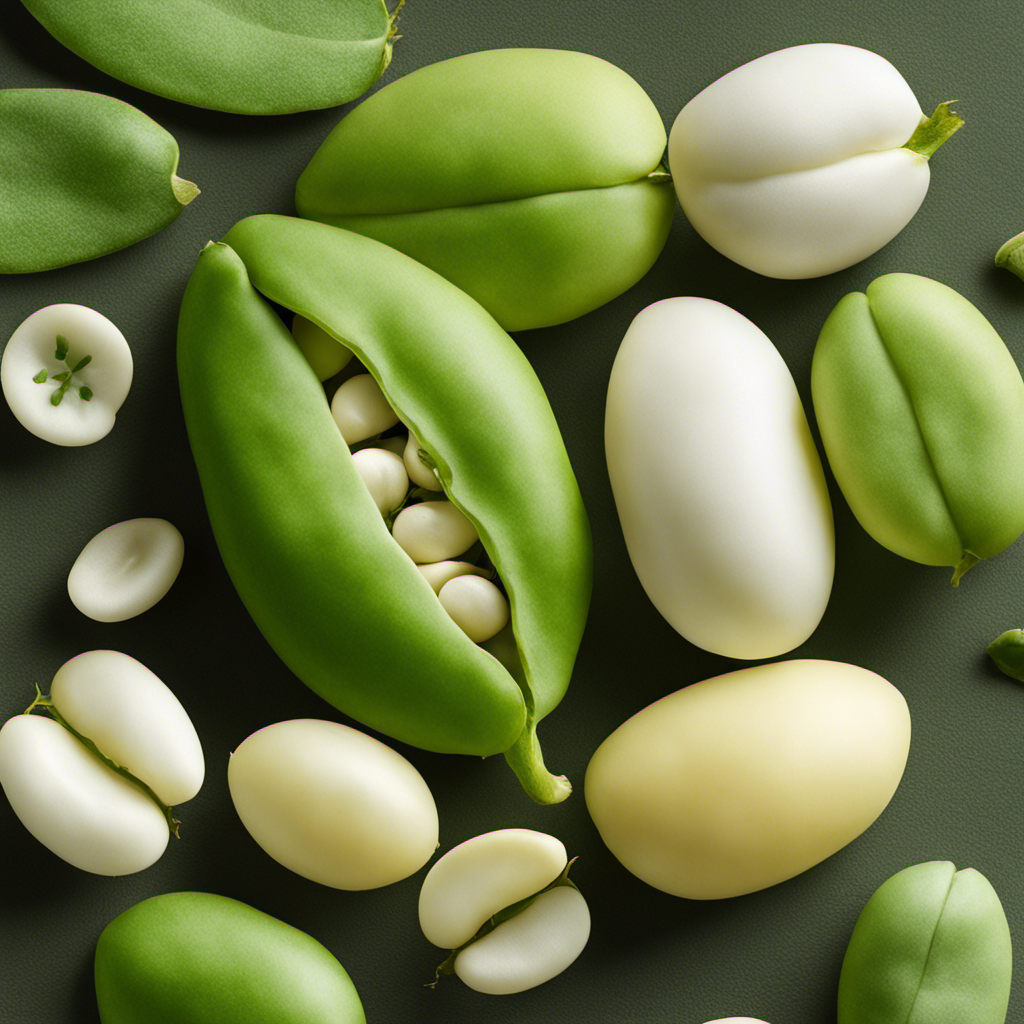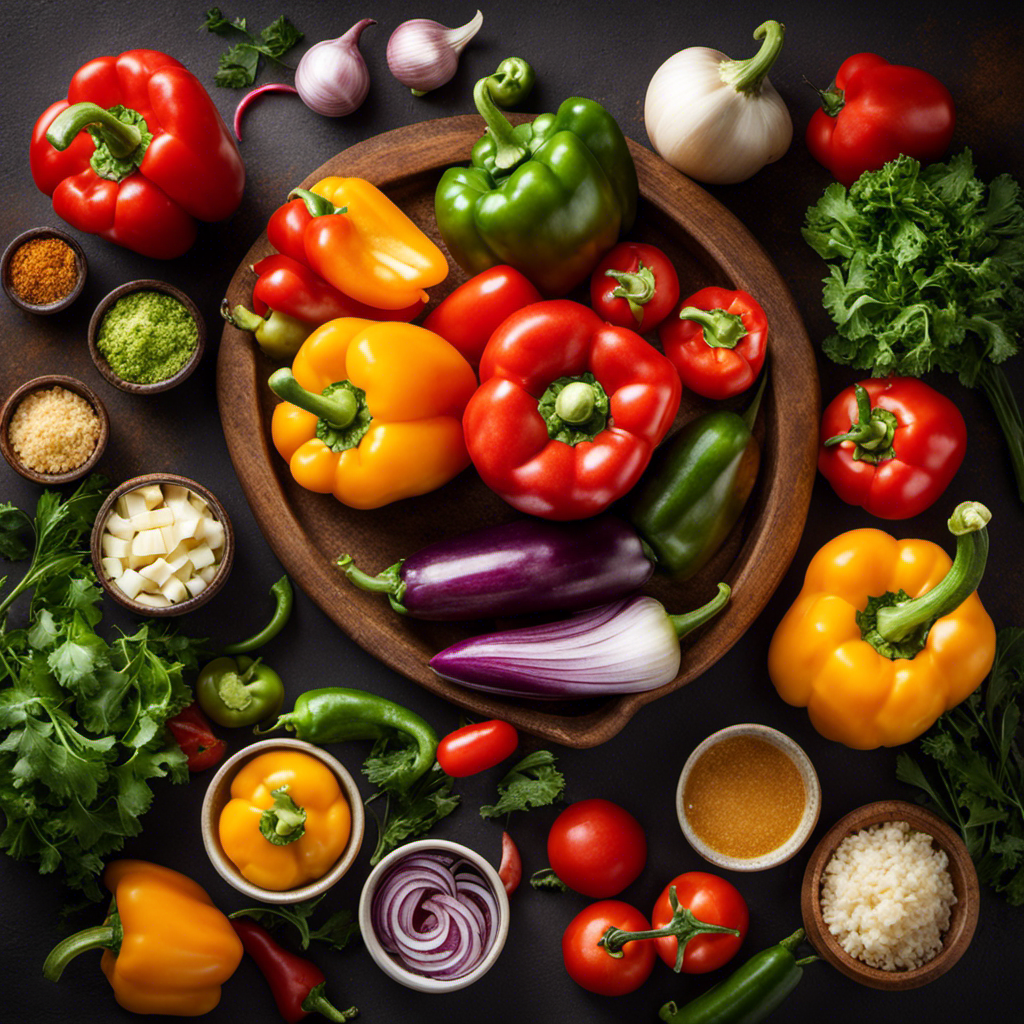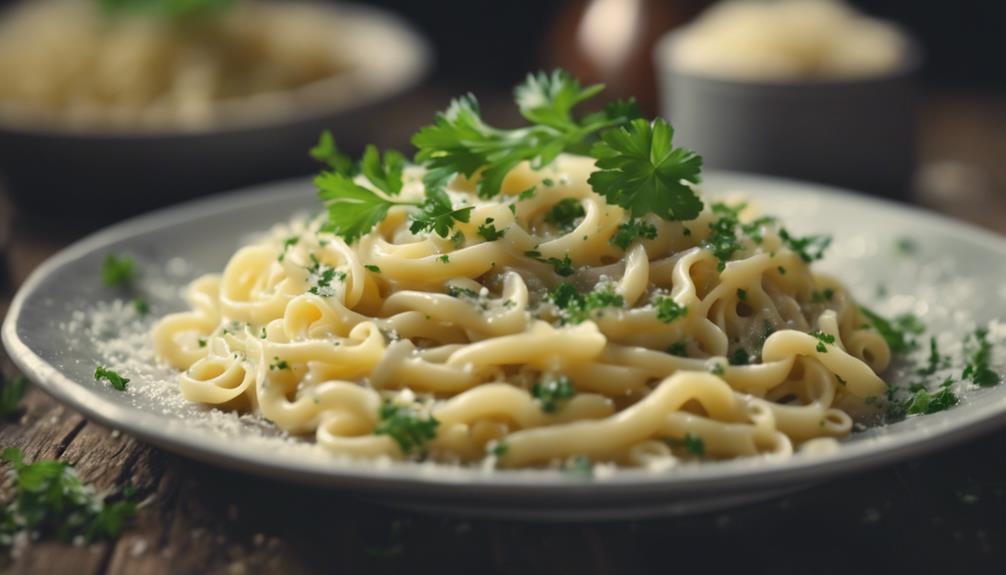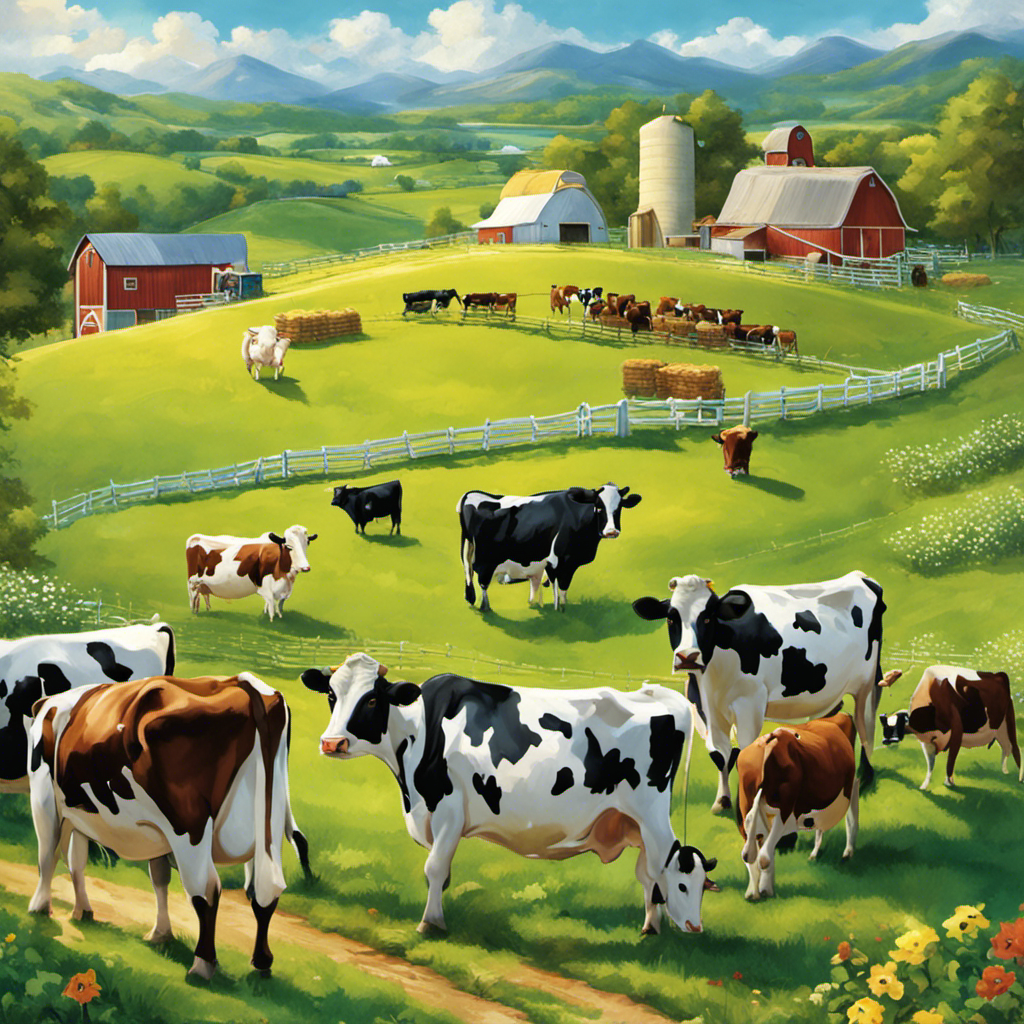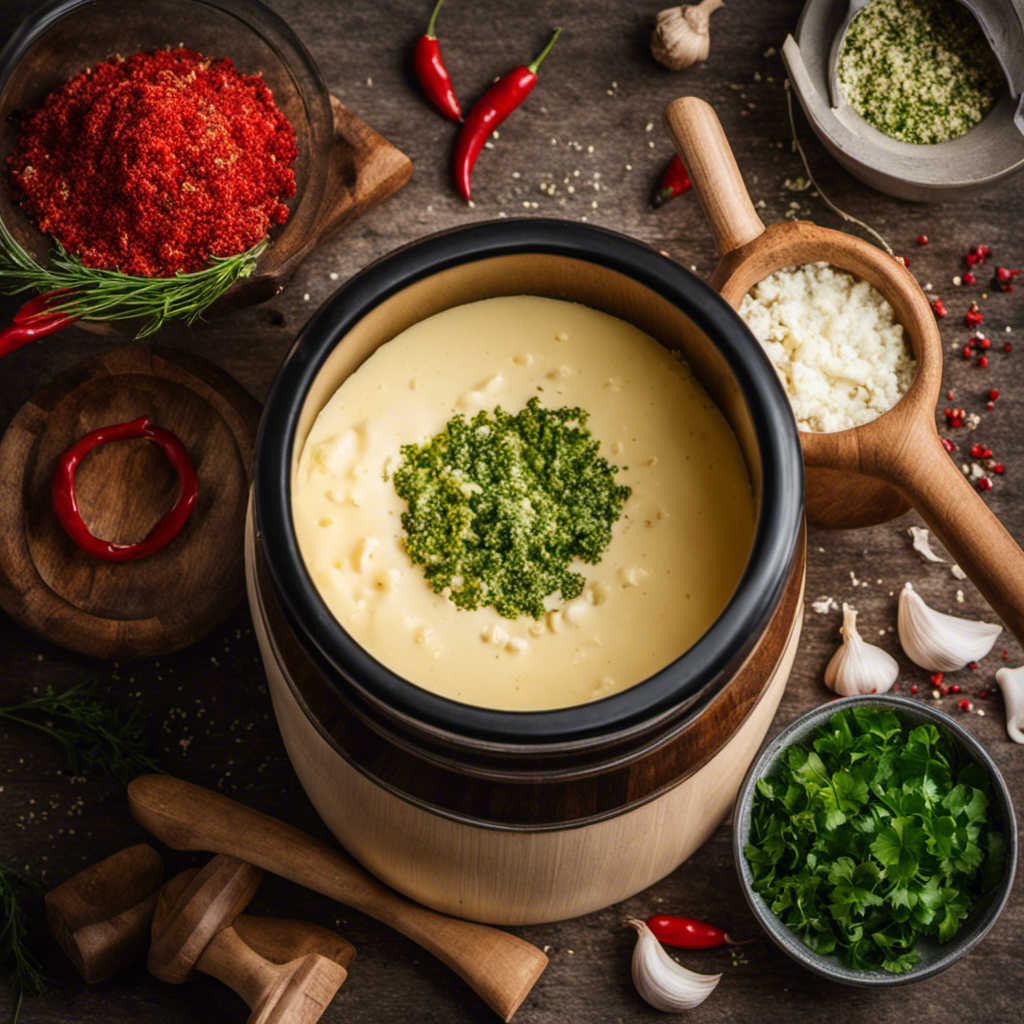I have always been curious as a food enthusiast about why lima beans are green while butter beans stay white.
In this article, we’ll delve into the fascinating world of bean coloration and uncover the reasons behind this intriguing phenomenon.
Through exploring the nutritional value, genetics, environmental factors, and cooking techniques, we’ll gain a thorough understanding of why these beans take on their distinct hues.
Additionally, we’ll discuss the historical and cultural significance of lima and butter beans, along with other factors that influence their coloration.
Get ready to satisfy your curiosity and enhance your culinary knowledge!
Key Takeaways
- Lima beans contain chlorophyll, which gives them their vibrant green color, while butter beans lack chlorophyll, resulting in their white or cream-colored appearance.
- The high fiber content in both lima beans and butter beans aids in digestion and weight management.
- Both lima beans and butter beans are rich in protein, fiber, and complex carbohydrates, providing essential nutrients.
- Genetic variations and environmental factors play a role in the coloration of lima beans and butter beans, with chlorophyll production influenced by genetics, sunlight, temperature, and nutrient availability.
The Nutritional Value of Lima Beans and Butter Beans
Lima beans and butter beans are both nutritious and provide important vitamins and minerals. These legumes are packed with essential nutrients that contribute to overall health. The nutritional value of lima beans and butter beans can be attributed to genetic factors and their unique composition.
Both lima beans and butter beans are rich in protein, fiber, and complex carbohydrates. They also contain significant amounts of vitamins such as vitamin C, vitamin K, and folate. These vitamins play crucial roles in maintaining a healthy immune system, blood clotting, and cell division.
Additionally, lima beans and butter beans are excellent sources of minerals like potassium, magnesium, and iron. These minerals support various bodily functions, including muscle and nerve function, bone health, and oxygen transport.
Furthermore, the high fiber content in lima beans and butter beans can aid in digestion and promote a feeling of fullness, which can be beneficial for weight management.
The Role of Chlorophyll in Lima Beans’ Green Color
Chlorophyll is the pigment responsible for the green color in plants, including lima beans. It plays a crucial role in photosynthesis, converting sunlight into energy for the plant.
In lima beans, chlorophyll is abundant in the chloroplasts of the cells, giving them their vibrant green hue.
Chlorophyll and Green Color
The reason why lima beans are green is because they contain chlorophyll, while butter beans are white due to a lack of chlorophyll.
Chlorophyll is a pigment that gives plants their green color and plays a crucial role in photosynthesis, the process by which plants convert sunlight into energy. It absorbs light energy from the sun and uses it to convert carbon dioxide and water into glucose and oxygen.
This process is essential for the growth and development of plants. Chlorophyll synthesis occurs in the chloroplasts of plant cells, where it is produced through a series of complex biochemical reactions.
The absence of chlorophyll in butter beans results in their white color, as they are unable to carry out photosynthesis effectively.
Role in Bean Color
One interesting fact is that the absence of chlorophyll in butter beans results in a different color compared to lima beans. While lima beans are green due to the presence of chlorophyll, butter beans lack this pigment and therefore appear white or cream-colored.
The color variation in beans is not just an aesthetic difference, but it also has implications for their nutritional benefits and cooking methods. For example, the color of beans can indicate the presence of certain phytochemicals, which are compounds that have been linked to various health benefits.
Additionally, the color of beans can affect their cooking time and texture. Understanding the genetics of bean coloration can provide further insight into the factors that contribute to these differences and help us better appreciate the diverse characteristics of legumes.
Understanding the Genetics of Bean Coloration
To understand why lima beans are green and butter beans are white, you can explore the genetics behind their different coloration.
The color of beans is determined by genetic variations that govern the inheritance of bean color. These genetic variations are responsible for the production of pigments, which give beans their characteristic colors.
In the case of lima beans, the green color is a result of the presence of chlorophyll, the pigment responsible for photosynthesis in plants. On the other hand, butter beans lack the genetic variations required for the production of chlorophyll, leading to their white coloration.
The study of bean color inheritance helps us understand the underlying mechanisms that control color formation in plants, providing valuable insights into the broader field of genetics and plant biology.
Environmental Factors Affecting Bean Color
When it comes to the coloration of beans, there is an ongoing debate about the extent to which genetics and environmental factors play a role.
While genetics certainly contribute to the initial color of the beans, environmental factors such as light, temperature, and nutrient availability can also influence the final coloration.
One key factor in determining bean color is the production of chlorophyll, which gives plants their green color and plays a crucial role in photosynthesis.
Genetic Vs. Environmental Influence
Did you know that the color of lima beans and butter beans is influenced by both genetics and the environment?
Genetic variation plays a significant role in determining the color of these beans. Different varieties of lima beans and butter beans have different genes that control pigment production. Some genes promote the production of pigments that give the beans their green color, while others result in the absence of pigment, resulting in white beans.
However, it’s not just genetics that determine the color. Environmental factors such as soil pH, temperature, and sunlight can also impact pigment production. For example, beans grown in acidic soil tend to have a more vibrant green color.
These genetic and environmental factors work together to create the color variation we see in lima beans and butter beans.
Now, let’s explore the role of chlorophyll production in further detail.
Role of Chlorophyll Production
Chlorophyll production in lima and butter beans is influenced by both genetic factors and environmental conditions. The presence of chlorophyll is responsible for the green color of lima beans, while the absence of chlorophyll results in the white color of butter beans.
Here are five factors that affect chlorophyll production in these beans:
- Genetic variations: Different varieties of lima and butter beans may have varying levels of chlorophyll production due to their genetic makeup.
- Light intensity: Adequate sunlight is crucial for the photosynthesis process, which produces chlorophyll.
- Nutrient availability: The presence of essential nutrients, such as nitrogen and magnesium, is necessary for chlorophyll synthesis.
- Temperature: Optimal temperatures promote efficient chlorophyll production, while extreme temperatures may hinder it.
- Water availability: Sufficient water supply ensures the proper functioning of the photosynthesis process and chlorophyll synthesis.
Understanding the role of chlorophyll production in lima and butter beans is essential for exploring the different varieties of these beans and their nutritional benefits.
Exploring the Different Varieties of Lima and Butter Beans
There’s a wide range of lima and butter bean varieties to explore. These beans exhibit a remarkable genetic variation, leading to differences in color, size, and flavor.
Lima beans come in various shades of green, ranging from light to dark, while butter beans are typically white in color. The variation in color is due to different pigments present in the beans. Additionally, the cooking methods for these beans can also affect their color.
Overcooking can cause the beans to lose their vibrant color and turn pale. It is important to cook the beans just until they are tender to preserve their natural color.
Cooking Techniques That Preserve Bean Color
Now that we have explored the different varieties of lima and butter beans, let’s delve into the cooking techniques that can help preserve their vibrant colors.
When it comes to cooking beans, it is essential to use methods that minimize color loss and maintain their visual appeal. Here are five effective techniques for preserving bean color:
- Blanching: This involves briefly immersing the beans in boiling water, which helps retain their green or white hue.
- Steaming: By steaming the beans instead of boiling them, you can prevent excessive color leaching.
- Quick cooking: Minimal cooking time can help preserve the natural color of beans, ensuring they remain vibrant and appetizing.
- Acidic ingredients: Adding a splash of lemon juice or vinegar to the cooking water can help retain the color of green beans.
- Shocking in ice water: After cooking, immediately plunging the beans into ice water can halt the cooking process and lock in their colors.
The History and Cultural Significance of Lima and Butter Beans
Steeping the beans in boiling water, as well as steaming them instead of boiling, are two effective techniques for preserving their vibrant colors.
However, before we delve into the cooking techniques, let’s take a moment to explore the history and cultural significance of lima and butter beans.
Lima beans, known as ‘pallares’ in Latin America, have been a staple in the region for centuries. They were cultivated by the ancient Incas and played a crucial role in their diet. Today, lima beans continue to be an important ingredient in Latin American cuisine, featuring prominently in dishes like Peruvian stews and Brazilian feijoada.
On the other hand, butter beans, also known as ‘baby lima beans,’ have a rich history in Southern cuisine. They were brought to America by African slaves and quickly became a favorite ingredient in dishes like succotash and Hoppin’ John.
Both lima and butter beans have not only shaped the culinary traditions of their respective regions but also hold cultural significance as symbols of sustenance and heritage.
Other Factors That Influence Bean Coloration
To maintain the vibrant colors of your cooked beans, consider factors such as the cooking time and the addition of acidic ingredients.
Cooking time plays a crucial role in preserving the color of beans. Overcooking can cause the beans to lose their vibrant hues and become dull and pale.
Acidic ingredients, such as lemon juice or vinegar, can help maintain the color by preventing the beans from turning brown.
Additionally, the nutritional content of the beans can also affect their color. Beans with higher levels of chlorophyll tend to be greener, while beans with lower levels may appear paler.
Different cooking methods, such as steaming or microwaving, can also impact the color retention of beans.
Frequently Asked Questions
What Are Some Popular Recipes That Use Lima Beans and Butter Beans?
Popular lima bean recipes and delicious butter bean dishes are widely enjoyed. They can be used in soups, stews, salads, and even as a side dish. These legumes provide a nutritious and tasty addition to many meals.
How Can I Tell if Lima Beans or Butter Beans Are Fresh and of Good Quality?
To determine freshness and quality of lima beans or butter beans, I check for vibrant color, firm texture, and absence of blemishes or mold. Factors like proper storage, age, and handling can affect their taste and texture.
Are There Any Health Benefits to Eating Lima Beans and Butter Beans?
Lima beans and butter beans offer numerous health benefits when incorporated into a balanced diet. They are rich in fiber, protein, and essential vitamins and minerals. Including them in meals can promote digestion, regulate blood sugar levels, and support overall wellness.
Can I Substitute Lima Beans for Butter Beans in a Recipe, or Vice Versa?
Yes, you can substitute butter beans for lima beans in a recipe, or vice versa. However, keep in mind that there are differences in taste and texture between the two.
Are There Any Alternative Methods of Cooking Lima Beans and Butter Beans That Can Enhance Their Flavor and Texture?
Alternative cooking methods for lima beans and butter beans can enhance their flavor and texture. Tips for enhancing flavor and texture include soaking the beans overnight, adding herbs and spices, and cooking them in a slow cooker for a longer period of time.
Conclusion
In conclusion, the distinctive green color of lima beans and the white color of butter beans can be attributed to a combination of factors. These include nutritional value, chlorophyll content, genetics, and environmental factors.
Exploring the different varieties of these beans and understanding cooking techniques that preserve their color can enhance the culinary experience. By considering the history and cultural significance of lima and butter beans, we can gain a deeper understanding of these remarkable legumes.
It is fascinating to delve into the various factors that influence bean coloration, making these beans a captivating subject for scientific inquiry.
